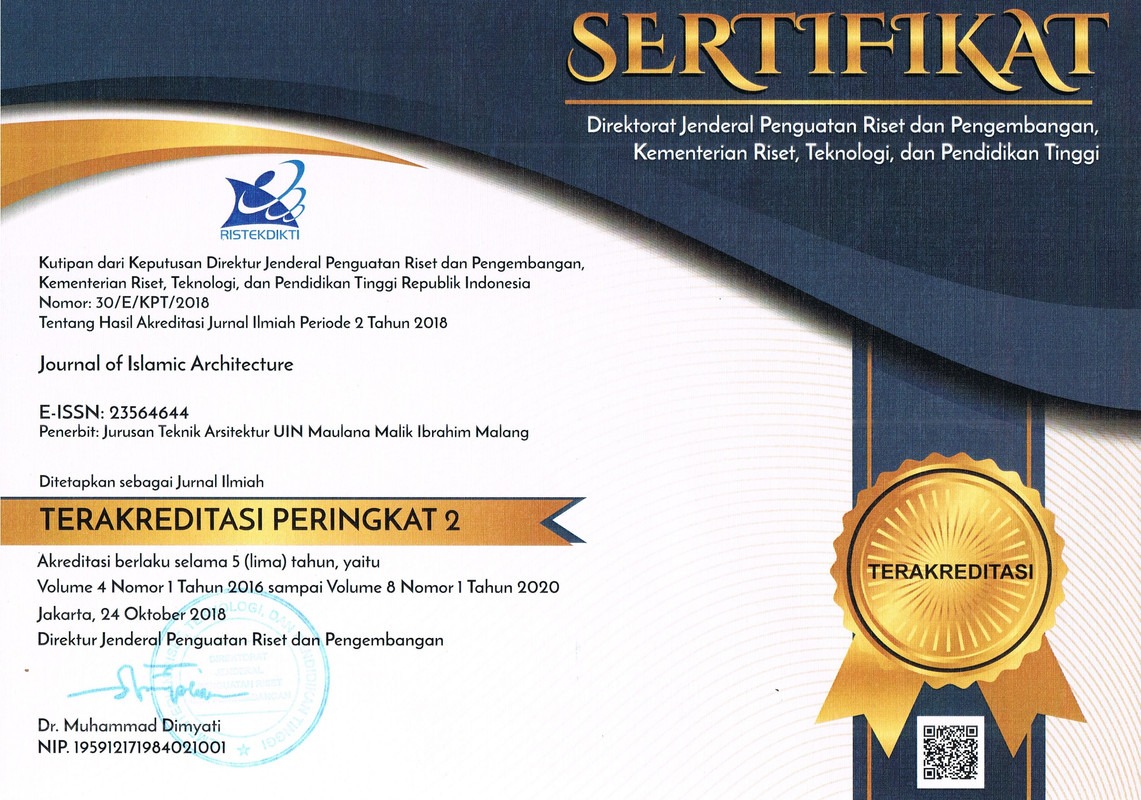SINO-ARABIC SCRIPT AND ARCHITECTURAL INSCRIPTIONS IN XI’AN GREAT MOSQUE, CHINA
Abstract
developed through time in response to cultural needs of the minority Muslim groups in China. The Islamic
calligraphy was widely used in architecture, especially in interior and exterior decoration of mosques and
other religious buildings. The aim of this study is to interpret the Islamic art and architecture in China through
application of Sino-Arabic script on mosques and crafts produced by Muslim minority in China in relation to the
Islamic civilization and Chinese civilization, in order to suggest some guidelines for the preservation of this
forgotten Islamic heritage. To achieve the aim of this paper the Sino-Arabic inscriptions will be examined in
order to determine their characteristics and the nature of the effects to which they have been subjected. A
broad range of information was collected from various sources and through a field survey that was carried out
in Xi’an Great Mosque in China. The collected information from field work will be analyzed with particular
regard to the special character of Chinese Islamic art and architecture. This study is an attempt to address
the important topic of Islamic calligraphy and its application on architectural buildings in China as part of
issues of Islamic architectural heritage and its integration with local tradition that have been occurred in the
Muslim world and it is hoped that it is going to be a significant contribution to the subject of Islamic art and
architecture in China as well as revival and preservation of this forgotten heritage. Detailed conclusion will be
arrived at the end and specific suggestions are intended to assist in examining the topic in depth and helping in
developing guidelines for regional expansion and adaptation of Islamic art and architecture with local
environmental condition to contribute more for the future of Muslim heritage and civilization.
Keywords
Full Text:
PDFReferences
Zekrgoo, Amir Hossein. (2008). Dialogue of Civilizations and Cultural Fusion along The Silk Routes: An Interdisciplinary Study of The Formation of Sino-Arabic Calligraphy. Proceeding paper of conference, Maritime Communication andIslamic Culture Quanzhou, Fijian, China.
Ettinghausen, Richard. (1974). Arabic Epigraphy: Communication or Symbolic Affirmation” in Near East Numismatics, Iconography, Epigraphy and History. Studies in Honour of George C Miles, Ed Dickram K, Beirut.
Bierman, I A. (1998). Writing Signs, the Fatimid Public Text, University of California press.
Hamzah, Abdu Rahman. (2007). The Application of Calligraphy in Mosques: Case Studies in Egypt, Turkey And Malaysia. PhD thesis, International Islamic University Malaysia.
Oleg, Grabar. (1992). The Mediation of Ornament, Princeton University Press, Princeton.
Luo, Xiaowei. (1994). “China" in Ed. Martin Frishman and Hasan-Uddin Khan. The Mosque: History, Architectural Development and Regional Diversity. London: Thames and Hudson
Haji Noor Deen Mi, Guangjiang. (2006). Arabic Calligraphy in China: translated by R.H. Al-Alusi, Season Magazine. USA.
DOI: https://doi.org/10.18860/jia.v3i1.2539
Refbacks
- There are currently no refbacks.






